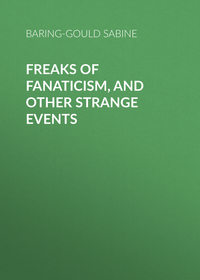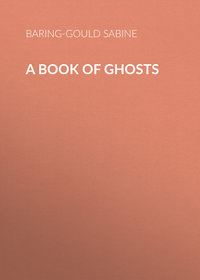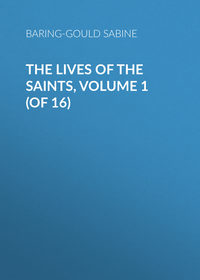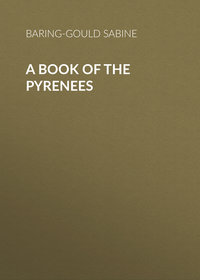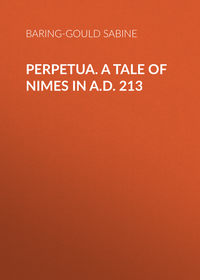 полная версия
полная версияDevonshire Characters and Strange Events
Her name was Mary Baker. She was born at Witheridge in Devonshire in 1791, and had received no education, being of a wild disposition and impatient of study. At the age of eight she was employed spinning wool during the winter, and in summer she drove her father’s horses, weeded the corn, etc. At the age of sixteen her father and mother procured a situation for her at a farmhouse with a Mr. Moon, at Brushford, near Witheridge. She remained there two years as nurse and general help, but left because paid only tenpence a week, and she demanded that her wage should be raised to a shilling, which Mr. Moon refused.
Her father and mother were highly incensed at her leaving, and treated her so ill that she ran away from home and went to Exeter, where she knew no one, but had a written character from her former mistress. She was engaged by a shoemaker named Brooke at the wage of £8 per annum. But she remained in this situation only two months. She spent her wage on fine clothes, especially a white gown, and went home in it. Her father was angry at seeing her dressed in white like a lady, and peremptorily ordered her to take the gown off. She refused and left, returned to Exeter, and went about begging. She wandered to Taunton and thence to Bristol, begging from house to house. From Bristol she made her way to London, where she fell ill with fever, and was taken into St. Giles’s Hospital. There she enlisted the pity and sympathy of a dissenting preacher, who, when she was well enough to leave, recommended her to a Mrs. Matthews, 1 Clapham Road Place, and with her she tarried for three years. Mrs. Matthews was very kind to her, and taught her to read; but she was a strict woman, and of the straitest sect of Calvinists. One day Mary heard that there was to be a Jews’ wedding in the synagogue near by, and she asked leave to be allowed to witness it. Her mistress refused, but Mary was resolved not to be debarred the spectacle, so she persuaded a servant in a neighbouring house to write a letter to Mrs. Matthews, as if from a friend of hers, to say that she was hourly expecting her confinement and was short of domestics: would Mrs. Matthews lend her the aid of Mary Baker for a while? Mrs. Matthews could not refuse the favour and sent Mary out of the house, and Mary went to the synagogue and saw what was to be seen there.
Meanwhile, Mrs. Matthews had sent to inquire how her dear friend was getting through with her troubles, and expressed a hope that Mary had been of assistance in the house. To her unbounded surprise, she learned that the good lady was not in particular trouble just then, and that she really did not comprehend what Mrs. Matthews meant about Mary’s assistance. When Mary returned to the house, having seen the breaking of the goblet and heard some psalm singing, she found that a storm was lowering. Her mistress had sent for the dissenting minister to give it hot and strong to the naughty girl. To escape this harangue Mary ran away, wandered about the streets, and seeing a Magdalen Reformatory, applied at the door for admission. “What! so young and so depraved!” was the exclamation with which she was received. She was admitted and remained in the institution some time, and was confirmed by the Bishop of London. Then it was discovered that she had all along not been qualified for admission, and was expelled.
She then exchanged her female garments for a boy’s suit at a Jew’s pawnshop, and started to walk back to Devonshire, begging her way. On Salisbury Plain she fell in with highwaymen, who offered to take her into their company if she could fire a pistol. A pistol was put into her hand, but when she pulled the trigger and it was discharged, she screamed and threw the weapon down. Thereupon the highwaymen turned her off, as a white-livered poltroon unfit for their service. She made her way back to Witheridge to her father, and then went into service at Crediton to a tanner, but left her place at the end of three months, unable further to endure the tedium. Then she passed through a succession of services, never staying in any situation longer than three months, and found her way back to London. There, according to her account, she married a foreign gentleman at a Roman Catholic chapel, where the priest officiated to tie the knot. She accompanied her husband to Brighton and thence to Dover, where he gave her the slip, and she had not seen him or heard from him since. She returned to London, was eventually confined, and placed her child in the Foundling Institution; then took a situation not far off and visited the child once a week till it died. After a while she again appeared at Witheridge, but her reception was so far from cordial that she left it and associated with gipsies, travelling about with them, telling fortunes.
It was now, according to her account, that the idea entered her head of playing the part of a distinguished stranger from the East, and when she quitted the gipsies, she assumed that part – with what success we have seen.
Mrs. Worall sent into Devon to ascertain what amount of truth was in this story. It turned out that her father was named Willcocks, and was a cobbler at Witheridge, and badly off. He confirmed Mary’s tale as far as he knew it. She had had an illness when young, and had been odd, restless, and flighty ever since; especially in spring and autumn did she become most impatient and uncontrollable. He denied that he had treated her cruelly, but he had taken the stick to her occasionally, as she was specially aggravating by throwing up every situation obtained for her after staying in it for but a short while.
Finally Mrs. Worall got her embarked on board a vessel, the Robert and Anne, at Bristol, Captain Richardson, under her mother’s maiden name of Burgess, for the United States, in the hopes that she might be able to find a situation in Philadelphia.
The reason why she was entered in her mother’s name was to prevent her from being overwhelmed by the visits and attentions of the curious. As it was, the Earl of Cork and the Marquess of Salisbury obtained interviews, got the girl to tell her story, speak her lingo, and doubtless did not leave without having put gold into her palm.
She was certainly a remarkable character, with astounding self-possession. Once or twice the housekeeper at Knole would rouse her by some startling cry or call when she was asleep, but even then she never passed out of her assumed character.
At Bath, the lady who had received her into her house proposed that a collection should be made to defray her expenses in returning home to Javasu. Bank-notes were thrown on the table, and some fell off on the floor. Caraboo looked on with stolid indifference. If she picked one up she replaced it on the table without glancing at the note to see how much it was worth; in fact, she acted as if she did not understand that bank-notes were other than valueless scraps of paper.
She was, moreover, insensible to flattery. A young gentleman seated himself by her one day and said, “I think that you are the loveliest creature I ever set eyes on!” She remained quite unmoved, not a flutter of colour was in her cheek.
The Greek valet mistrusted her at first, but after a while was completely won over to believe that she was a genuine Oriental princess. She was entirely free from vicious propensities beyond that of feigning to be what she was not. She never purloined anything; never showed any token of wantonness. Vanity and the love of hoaxing people were her prevailing passions; there was nothing worse behind.
So over the blue sea she passed to the West, and what became of her there, whether there she gulled the Americans into believing her to be an English countess or marchioness, is unknown.
Of one thing we may be pretty certain, that the gentleman who had visited the Far East, and who pretended to understand her language and thereby drew out her history, never again dared to show his face at Knole.
The authority for this story is: “A narrative of a Singular Imposition practiced … by a young woman of the name of Mary Willcocks alias Baker, … alias Caraboo, Princess of Javasu.” Published by Gutch, of Bristol, in 1817. This contains two portraits, one by E. Bird, R.A., the other a full-length sketch of her in her costume as a princess.
JOHN ARSCOTT, OF TETCOTT
The family of Arscott, of Dunsland, is one of the most ancient in the county. Its certified pedigree goes back to 1300, when they were Arscotts, of Arscott, in the parish of Holsworthy. The elder branch remained at Dunsland, one of the finest houses in North Devon, or rather cluster of houses, for it consists of the early mansion of the reign, at latest, of Henry VII, probably much earlier, of another portion erected in the reign of James I, and of a stately more modern mansion erected in the seventeenth century. Dunsland came into the possession of the Arscotts through marriage with the heiress of Battyn in 1522. In 1634 the heiress of Arscott married William Bickford, and it remained in the Bickford family till 1790, when the heiress conveyed it to her husband, William Holland Coham. In 1827 the heiress of Coham conveyed Arscott and Dunsland to her husband, Captain Harvey Dickenson, of the Madras Army, whose son now owns the estate and resides at Dunsland.
So far the elder branch. The junior branch of Arscott was settled at Tetcott in 1550, where it continued till 1783, when died John Arscott, of Tetcott, the last of that stock, whereupon the Tetcott estate passed to the Molesworths through the descendant of a great-aunt.
Tetcott House – the older – remains, turned into stables and residence for coachmen and grooms. A stately new mansion was erected in the reign of Queen Anne. But when the property passed to the Molesworths this was pulled down, and all its contents dispersed. The family portraits, the carved oak furniture, the china fell to the contractor who demolished the mansion. But the park remains with its noble oak trees, and of this more anon.
John Arscott, of Tetcott, was born in 1718 or 1719; he lived all his life at the family mansion, and was a mighty hunter before the Lord.
On the presentation of Sir W. Molesworth, Bart., the Rev. Paul W. Molesworth was presented to the living of Tetcott, and he, in 1855, succeeded to the baronetcy.
In the register of Tetcott he made the following entry in Latin, which is here given in translation: —
“Of the Rectors who preceded me I know almost nothing. John Holmes, whose name appears first in the list of Rectors, was inducted by ‘Quare impedit’ – to use the legal term – in face of the Bishop’s objection. Of this I was assured by the Rev. G. C. Gorham, who about the year 1848, as the Bishop of Exeter – H. Phillpotts – refused to institute him to a benefice on account of his unsoundness on Baptism, attempted to get himself instituted compulsorily in the same manner.
“James Sanxay, whose name comes lower down in the list, was a man of no small classical learning, as is proved by his editing a Lexicon of Aristophanes.
“I have heard it said of him, that on the title page of a book he added after his name the letters – O.T.D., and on being asked what these signified, he replied: ‘I have noticed that most Authors, when publishing their writings, have the greatest objection to their bare name, always add something to it, such as – F.R.S., LL.D., M.A. So to keep up the old custom, I myself have added O.T.D., that is – Of Tetcott, Devon.’”
[Between the above and what follows a leaf has been cut out of the register. Perhaps other rectors were told of on this missing leaf.]
“Of the ‘Lords’ who have held the manor of Tetcott in an unbroken line, there are not many surviving memories.
“I have heard a story told by the old parishioners of one known as ‘The wicked Arscott,’ so named because he used to keep poor people and beggars from his doors by big dogs. He still, they say, pays the penalty of his cruelty in an old oak near the Church.
“He was succeeded, though I cannot say whether at once or after an interval, by John Arscott, the last of that name in Tetcott, and the most famous. You will find him described with no small literary skill on a following page. He was benevolent to poor children, and a generous and attentive host. He kept open house, as they say, thinking more of love than of money. An eager student of the laws of nature, and at the same time a devoted follower of the chase, whether of stag, or fox, or any other such beast, he was at once the enemy and the patron of dumb animals. He used to keep a toad on the doorsteps of his house with such care, that that hateful and loathsome animal, moved by such unusual kindness, used to come out of its hiding place, when its master called it, and take its food on the table before his astonished guests, until it lost its life through the peck of a tame raven. This fact, I believe, has escaped the notice of every writer on British reptiles. May the toad be reverenced in Tetcott for ever. Not even the rapacious spider was forgotten. For when one had spun its fatal toils in a corner of a pew in the Church, our Knight used to bring a bottle full of flies into the sacred building itself, that he might while away the tediousness of Divine Service by feeding his Church pet. He used to go in an old soiled coat into a wood where the ravens nested, and the birds would come down and settle on his shoulder, looking for the favours of a bountiful hand.
“When he had to go to the neighbouring town of Holsworthy on judicial business, it was his custom to take a bag containing fighting cocks. The present inhabitants would smile at such a proceeding, but a certain simple rudeness is excusable in our forefathers.
“Nor may I be silent about an irreverence which an otherwise upright man used to show in the House of God. He would accost the country people he knew in a friendly manner. If a Clergyman was reading the Bible badly [for it was customary for a Cleric to read the Lessons now and then] when he finished with, ‘Here endeth the second lesson’ – our Knight would call out, ‘Thee’st better never begun it.’ He would throw apples at the Priest in the middle of Divine Service.
“Like Ajax and Peleus and other heroes he was not ashamed to woo a handmaid, and married one of his father’s servants. He died without issue, most widely mourned. His estate went to his kinsman, William Molesworth. The poor people, I believe, still cherish the memory of so dear a man, and give his name to their little ones in Baptism, as they might the name of a Saint.
“If in these brief narratives, gathered here and there, I have in any way transgressed the rules of more classical Latin, I beg the kind reader to pardon me. If in any way I have departed from the truth, I have done so unwittingly. God be merciful.
[John Arscott died in 1788.]”Sir Paul W. Molesworth has dealt with John Arscott more tenderly than that man deserved.
A modern writer3 thus describes the sort of man that John Arscott was: —
“A familiar figure in the eighteenth century was the country squire, familiar the long wig, long coat, silver buttons, breeches and top-boots, the bluff, red face, the couple of greyhounds and the pointer at heel. When not hunting the fox, the popular sport of the day, he settled the disputes of the parish, or repaired to the nearest ale-house to get drunk in as short a space of time as possible. Usually he only drank ale, but on festive occasions a bowl of strong brandy punch, with toast and nutmeg, added to his already boisterous spirits. On Sundays he donned his best suit, which often descended from father to son through several generations, repaired to the parish church, and entered the family pew, where he slumbered during a great part of the somewhat dismal service. He seldom went further than his own country town, for a journey to London was still full of danger and discomfort.”
Who that has read Fielding and other novelists of the period does not know the figure, full-blooded, coarse to brutality, with a certain amount of kindliness in his disposition, whose talk is of bullocks or horses or dogs, and who, after the ladies had withdrawn, spent the rest of the evening at his hospitable table singing ribald songs and telling obscene stories? I possess, myself, a little book in MS. of the after-dinner stories told by a great-great-uncle, that has to be kept under lock and key, so unfit is it for perusal by clean-minded persons. The songs were from Tom D’Urfey’s Pills to Purge Melancholy, or other collections of the sort. I had a collection of them that belonged to an ancestress, or rather near kinswoman of an ancestor, engraved on copper plate. I gave the volume to the British Museum. It was not a book to be kept on one’s shelves when there were children in the house.
John Arscott was never married, or if he did marry, no trace of such a ceremony is forthcoming. He lived with a certain Thomasine Spry as his mistress. If he did “make an honest woman of her,” it was, as reported, on his death-bed. She survived him, and was buried at Tetcott in 1796, aged seventy-six. They had no issue.
Mr. Hawker, in his Footprints of Former Men in Far Cornwall, has told several stories of John Arscott’s favourite, the last of the jester dwarfs, Black John, one of whose jokes, that entertained the company after dinner, was to tie together by the legs several live mice and swallow them one by one, and then, by means of a string, pull them up from his interior parts again. Another of his tricks was to mumble a sparrow. The living bird was gripped by the legs by his teeth, and then with his lips and teeth he would rip off the feathers, till he had plucked the unfortunate sparrow bare. A couple of projecting fangs were of especial value as sparrow-holders to Black John. His hands all the while were knotted or tied behind his back.
One evening he fell asleep by the hearth in the hall at Tetcott. Suddenly he started up with a cry, “Oh, Master,” said he, “I was in a sog [sleep] and I thought I was dead and in hell.”
“Well, John,” said Arscott, “and what did you see there?”
“Sir, everything very much like what it is here in Tetcott Hall, the gentlefolks nearest the fire.”
John Arscott had, as already related, an enormous tame toad that came out on the doorstep to be fed every morning, and went by the name of “Old Dawty.” The country people thought that it was John Arscott’s “familiar.” When he whistled, the creature would hop up to him, and leap to his hand or to his knee. One day a visitor with his stick killed it; but seeing this Black John flew at him and knocked him down and belaboured him soundly. John Arscott came out, and when he heard what the visitor had done, turned on his heel, and when the gentleman had picked himself up and drew near, slammed the house door in his face.
This is Mr. Hawker’s version of the story of the end of the pet toad, which is at variance with that related by the Rev. P. W. Molesworth, whose authority is more trustworthy than that of Mr. Hawker, a gentleman given to romancing.
“Black John’s lair was a rude hut, which he had wattled for a snug abode close to the kennels. He loved to retire to it, and sleep near his chosen companions, the hounds. When they were unkennelled he accompanied and ran with them on foot, and so sinewy and so swift was his stunted form that he was very often in their midst at the death.”
John Arscott had another follower called Dogget. “My son Simon” or simply “Simon” he was wont to call him. He also ran after the foxhounds.
There exists a fine ballad on the “Hunting of Arscott, of Tetcott,” in which Simon is mentioned. Mr. Frank Abbott, gamekeeper at Pencarrow, but born at Tetcott, informed me, concerning Dogget: —
“Once they unkennelled in the immediate neighbourhood of Tetcott, and killed at Hatherleigh. This runner was in at the death, as was his wont. John Arscott ordered him a bed at Hatherleigh, but to his astonishment, when he returned to Tetcott, his ‘wife’ told him all the particulars of the run. ‘Then,’ said Arscott, ‘this must be the doing of none other than Dogget: where be he?’”
Dogget was soon found in the servants’ hall, drinking ale, having outstripped his master and run all the way home.
The ballad above mentioned begins as follows: —
In the month of November, in the year fifty-two,Three jolly Fox-hunters, all sons of the Blue,Came o’er from Pencarrow, not fearing a wet coat,To take their diversion with Arscott of Tetcott.Sing fol-de-rol, lol-de-rol, etc.The daylight was dawning, right radiant the mornWhen Arscott of Tetcott he winded his horn;He blew such a flourish, so loud in the hall,The rafters resounded, and danced to the call.Sing fol-de-rol, etc.In the kitchen the servants, in kennel the hounds,In the stable the horses were roused by the sounds,On Black-Bird in saddle sat Arscott, “To-dayI will show you good sport; lads, hark, follow, away!”Sing fol-de-rol, etc.To return to Black John. His wonted couch when he could not get back to Tetcott at night was a bed among the reeds or fern of some sheltering brake or wood, and he slept, as he himself used to express it, “rolled up, as warm as a hedge-boar, round his own nose.” One day he was covered with snow, and found to all appearance dead. He was conveyed to Tetcott and put in a coffin. But as he was about to be buried, and whilst the service was proceeding, a loud thumping noise was heard within the coffin. The lid was removed, and he sat up. He had been in a long trance, but the funeral ride and jolting had revived him, and, said he, “When I heard the pa’sson say ‘Earth to earth and dust to dust,’ I thought it high time to bumpy.”
After that he had no love for parsons of the Church or indeed ministers of any denomination, for every one of them, he said, would bury him alive, if they could. Once an itinerant Methodist preacher came across him and asked his way. Black John volunteered to show him a short cut across the park, and led him to a paddock, in which his master kept a favourite bull. He thrust the preacher into it and fastened the gate. What ensued is matter of guess-work. A yell and a bellow were heard, and some object was seen projected into the air over the hedge. Soon after Black John appeared at the Hall with a white tie in his hands, which he gave to his master, and said, “This be the vag-ends of the minister – all I could recover.”
“When gout and old age had imprisoned Mr. Arscott in his easy chair, Black John nuzzled among the ashes of the vast wood fires of the hearth, or lay coiled upon his rug like some faithful mastiff watching every look and gesture of his master; starting up to fill the pipe or tankard of old ale, and then crouching again. At the squire’s death and funeral, the agony of the misshapen retainer was unappeasable. He had to be removed by force from the door of the vault, and then he utterly refused to depart from the neighbourhood of the grave. He made himself another lair, near the churchyard wall, and there he sobbed away the brief remnant of his days.”
The story goes that on one long and tremendous chase, Dogget running by his master’s horse —
“How far do you make it?” said Simon the son.“The day that’s declining will shortly be done.”“We’ll follow till Doomsday,” quoth Arscott, – beforeThey hear the Atlantic with menacing roar.On this occasion the chase continued to Penkenner.
Through Whitstone, and Poundstock, St. Genny’s they run,Like a fire-ball, red, in the sea set the sun.Then out on Penkenner – a leap, and they go,Full five hundred feet to the ocean below.In this memorable run, the fox went over the cliffs and the hounds after him; but Arscott and the rest of the hunters drew up, and though he lost his hounds, he did not lose his life. Penkenner is a magnificent and sheer cliff, west of St. Genny’s Church. A deep cleft is on one side, and Crackington Cove on the other. There was no possible escape for the fox. As to the “sons of the Blue” who were in this memorable run with Arscott, of Tetcott, opinions differ.
The versions of the ballad vary greatly. I have had a copy, written in 1820, with explanatory notes. The date of the song is sometimes set down as 1752, sometimes as 1772. The “sons of the Blue” are taken to have been Sir John Molesworth, of Pencarrow, Bart., William Morshead, of Blisland, and Braddon Clode, of Skisdon. But neither Sir John Molesworth nor Mr. Morshead was, as it happens, a naval man. If the date were either 1652 or 1672, it would fit an earlier John Arscott, of Tetcott, who died in 1708; and Sir John Molesworth of the period was Vice-Admiral of Cornwall; and the sons of the blue were his sons, Hender, Sparke, and John. The second John Molesworth married Jane, daughter of the elder John Arscott, in 1704. It seems probable, accordingly, that the ballad belonged originally to the earlier John Arscott, and that it was adapted a century later to the last John Arscott. The melody to which it is still sung at the rent-audit of the Molesworth estate at Tetcott is a very ancient one, which was employed by Tom D’Urfey, in his Pills to Purge Melancholy, 1719, for a song entitled “Dear Catholic Brother.” I have given it in my Songs of the West.



